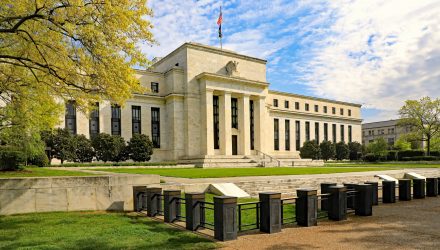The stock market is slumping again today as Fed Chairman Jerome Powell’s outlook on the economy has dampened investor perspectives, leaving them waiting for more guidance on the central bank’s next move to bolster markets and save the economy from coronavirus contagion.
While negative interest rates, something that has been pushed by President Trump and become popular in other nations, is off the table, for now, some strategists feel the Fed could release a fresh round of quantitative easing before or during the upcoming June meeting. Quantitative easing was first initiated by the Fed during the Great Recession and became known as QE.
Powell referred to the negative yields used in Europe and Japan as an “unsettled” policy, claiming that it’s unclear whether or not there are benefits, and the policy stymies a bank’s lending ability.
While stocks flushed into the close yesterday and showed further losses in the overnight session, the downdraft gained momentum after Powell’s comments about the economy, and Treasury yields balanced at lower levels.
Mark Cabana, head of U.S. short-rate strategy at Bank of America, said it was optimistic for the economy that Powell shrugged off negative rates, but the chairman’s lack of detail on other measures was unsettling.
“He talked about challenges with financial intermediation. He didn’t say never, ever, ever but he says the Fed’s thinking about negative rates has not changed, and they would like to utilize other tools, and that’s going to be the focus. We know generally what those tools are but what I want to know is how is the Fed thinking about forward guidance, what type of terms would they utilize with forward guidance, and how they are thinking about asset purchases?” Cabana said.
The Fed has been buying Treasurys and mortgage-backed securities, including ETFs, in a struggle to add liquidity to markets, adjusting the purchase amount on a weekly basis. Now experts and strategists would like to see more QE or a program in place on a longer-term basis.
“It’s possible they announce something before the June meeting, given that [the Treasury market]absorbed the increase in supply quite well,” said Jon Hill, BMO fixed income strategist. “Treasury dramatically increased auction size, and the 10-year yields are still at 64 basis points. I don’t think there’s an urgency to force a QE before June, but it seems that type of guidance will come by the June meeting at the latest.”
“What they’ve been doing is more liquidity based,” said Blake Gwinn, U.S. rate strategist at NatWest Markets. When markets seized up in March, the Fed jumped in and helped provide liquidity. The central bank also has cut the fed funds target rate to near zero, and it has announced other policy moves, such as a lending program for businesses and facilities aimed to help markets for commercial paper, corporate debt and municipal bonds.
Despite the dour tone of Powell’s remarks, experts generally recognize the overbought state of the stock market.
“I think he’s just being realistic. The S&P 500 is at a 20 P-E. I’m not a stocks guy but that’s hard to justify,” said Hill.
“The question is when does the FOMC confirm that that will be the pace going forward,” Hill said. “Up until now, the issuance has been so heavy in the front end that there’s an argument to include bills to help with market function.” But he said QE is intended to encourage risk, so it could target Treasury notes of five-year duration or longer.
For more market trends, visit ETF Trends.
